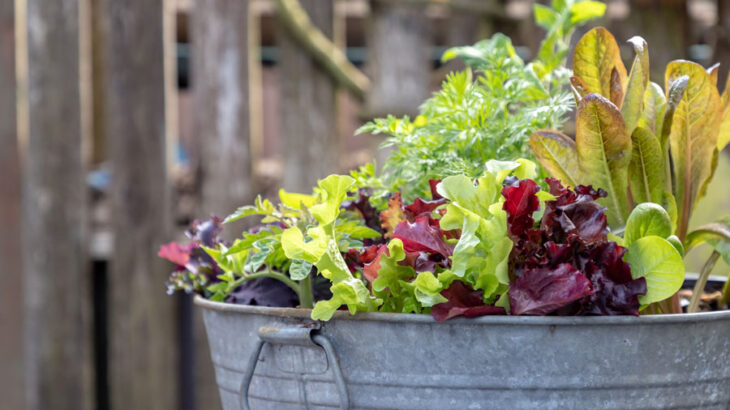If you don’t have a yard or outdoor area large enough to grow vegetables, don’t let that stop you! Anyone can grow excellent produce in a small space, even pots. There are several things to keep in mind as you begin:
PICKING THE RIGHT PLANTS:
As more people choose to live on smaller lots or in apartments, breeders have hybridized plants that produce on patios and in small areas. Certain plants now come in more compact sizes that are just right for those needing to grow in a limited space; these include compact squash, tomatoes and beans.
Here are some plants that grow well in raised beds and containers: Basil, tomatoes, peppers, lettuce, eggplant, kale, bush beans, spinach, Swiss chard, chives, scallions, garlic, radish, mustard greens, micro greens and turnips.
CONTAINERS:
Virtually any container can be used to grow vegetables and flowers: flowerpots, fabric grow bags, galvanized buckets, stacked containers, raised beds or even an old shoe.
When placing containers, make sure that the larger pots/plants are placed toward the back, with medium-sized pots and smaller pots in front. This allows sun to reach them all, and most things do best in full sun (6-plus hours a day).
Also note that pots tend to dry out faster, so check soil moisture several times a week. During our hot summers, pots may need watering daily or several times a day.
ROTATION:
Plan to move plants to different pots or fresh soil each growing season. Plants of the same “family” tend to get the same diseases. These diseases stay in the soil and may infect the next crop. Moving your plants to different pots will help control this.
SUCCESSIVE PLANTING:
Cole plants, such as cabbage, kale, broccoli and turnips, grow best during the cooler months. If started in early spring, they will bolt and go to seed in warmer temperatures.
As these plants faze out, replant with hot-season crops, such as tomatoes, peppers, squash and eggplant. Keep your garden pots full and improve success.
SOIL HEALTH:
Maintain healthy soil by repotting in a fresh medium each season. Fertilize monthly with an all-purpose plant food to keep everything producing at its maximum.
MULCH:
As temperatures rise, watering becomes even more essential to keeping plants healthy. Mulch reduces weed pressure, cools the soil and helps maintain moisture.
AQUAPONICS:
Consider growing some of your plants in water with added nutrients. There are many new products on the market. Why not try your hand at growing in a “new” way?
The disadvantages: While container gardening is a great option, especially for those with limited space, it’s important to note that it limits the variety of vegetables you can grow. The largest disadvantages are their need for frequent watering and fertilization and the weight of the containers.



